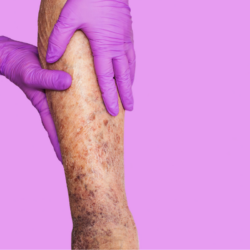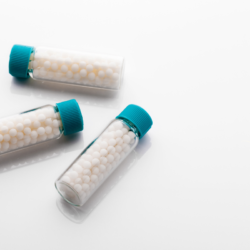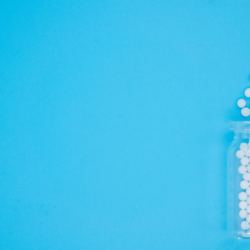Homeopathy, a branch of medicine often shrouded in mystery and misunderstanding, has been around for over 150 years. It is attracting growing interest but remains, for many, a vague and ill-defined concept. Against this backdrop, this article aims to clarify the true principles and methods of homeopathy, disentangling the facts from the preconceptions.
From the outset, it is essential to dispel certain erroneous beliefs that often surround homeopathy. Contrary to popular belief, homeopathy is not simply herbal medicine. It differs significantly from phytotherapy, aromatherapy and gemmotherapy. Similarly, homeopathy is not a simple microdose treatment, nor is it a practice reduced to a philosophy or mysticism. In fact, homeopathy is based on very specific principles and a rigorous methodology.
By addressing these themes, this article aims not only to provide a clear and precise understanding of homeopathy, but also to establish an informed dialogue about its applications and effectiveness. Whether you are a healthcare professional, a student or simply curious, this text will shed light on a medical practice that is often misinterpreted.
Some mistaken beliefs about homeopathy
Homeopathy is a plant-based medicine:
Wrong! Hence the confusion that still exists today between homeopathy, phytotherapy, aromatherapy and gemmotherapy. This is a fundamental error of definition.
Homeopathy is the treatment of disease by disease:
Wrong! A pithy but inaccurate formulation, it has enabled some people to claim that it is the treatment of the organ by the organ. Homeopathy would thus become synonymous with “organotherapy”, a method of treatment which postulates that infinitesimal dilutions of healthy animal organs are capable of treating the pathology of homologous human organs… If this were true, what an ease and what a revolution! In reality, however, it is nothing more than a bad play on words, and above all an untruth.
Homeopathy is microdose therapy:
Wrong! For most people, “homeopathic” is synonymous with “small quantity”. In this case, it would be enough to prescribe anything in infinitesimal doses to “do” homeopathy. This other error of definition has been cultivated by some to get people to prescribe under the umbrella of homeopathy.
Homeopathy is a philosophy, if not a mystical religion:
Wrong! This is a historical error and an insult to the memory of Hahnemann, who placed it on a purely experimental level.
So it’s hardly surprising that, following these errors and untruths, some ignoramuses consider homeopathy to be a charlatan’s therapy.
Exact definition and method of application of homeopathy
Homeopathy is a therapeutic method based on the phenomenon of similarity; it consists of giving the patient, as medicine, the substance that creates similar(homeo) suffering(pathos) in a healthy and/or sensitive individual. This method therefore has 3 original features.
First originality → Pathogenesis :
Over the past decades, certain authors have successively sorted through the heap of symptoms. These symptoms could, moreover, be found in old books of homeopathic medical material. They were able to show that in fact each pharmacodynamic substance, whether it belongs to the plant, animal or mineral kingdom, has, depending on its toxicity, an elective tropism for this or that organ, for this or that function, for this or that tissue. They have been able to specify that they have, as it were, privileged targets of action.
Initially, it is these “pathogenic targets” that we need to know about. It will very quickly become apparent that the same organ, the same function, the same tissue can be toxicologically or pharmacologically affected by several different substances. But each of these substances acts on the targets in question in its own specific way, i.e. in ways that are characteristic of the substance being tested.
Secondly, we also need to know what these characteristics are. Now that you know the reciprocal affinities between certain organs or physiological functions and certain pharmacodynamic substances, and the characteristic ways in which they act, you will see the third stage of the homeopathic approach, which logically deduces the therapeutic possibilities of the substance tested according to the law of similars.
Second originality → Similar suffering:
To understand in the expression “similar suffering”; all the changes in the way the patient feels or acts as a result of his illness; i.e. not only the pathognomonic signs of the diseases to be treated (those of classical semiology) but also the individual reactionary symptoms, particular to each patient as a result of his illness (those which constitute homeopathic semiology).
We have already emphasised that homeopathic semiology does not replace classical semiology (which leads to a nosological diagnosis) but complements it with particular, personal nuances which lead to the choice of medicine. From a practical point of view, we need to ask ourselves more specific and detailed questions, which will enable us to highlight certain particular, individual nuances, specific to each person’s behaviour in the disease.
Third originality → The infinitesimal dose:
As the homeopathic medicine thus defined acts in the same direction as the overall reactional mode of the patient considered as a biological unit and an indissociable somato-psychic whole, it is essential to use infinitesimal doses. In practice, therefore, the question should never be asked: “Which homeopathic medicines should be used for which nosological conditions?” but rather: “Which substances would cause similar symptoms, both lesional and functional?
Homeopathy today
It was after years of experimentation that Hahnemann came to the conclusion that, “in order to obtain a prompt, gentle and lasting improvement”, it was most often necessary to use low or infinitesimal doses, the preparation of which he codified.
Homeopathic medicines, determined according to the method we have just described, will in fact act in the same direction as the overall reaction mode of the sick organism, an organism considered as an inseparable biological, somato-psychic unit. They must therefore be administered in just the right dose to stimulate the body’s defences, without aggravating the pathological symptoms.
Everything concerning homeopathic medicines, which are specific regulators of the organism, as opposed to conventional medicines which are usually coercive or substitutive, is dominated by the notion of infinitesimal doses.
Training and certification of homeopathic practitioners :
Homeopathy, as a medical discipline, requires specialised training and rigorous certification for those who aspire to practise it. This section of the article explores the training requirements and process necessary to become a certified homeopathic practitioner, while comparing training standards between different countries.
General training requirements
Training in homeopathy is generally characterised by a combination of in-depth theoretical knowledge and practical experience. Candidates are often required to follow a specialised study programme covering subjects such as the principles of homeopathy, homeopathic medical subjects, pharmacology and clinical practice. These programmes may be offered by universities, schools specialising in alternative medicine or homeopathic training institutes.
In addition to knowledge specific to homeopathy, a thorough understanding of general medicine is often required, which implies familiarity with body systems, common diseases, and diagnostic principles.
Certification and practical requirements
To obtain certification, a prospective practitioner must generally pass an examination that assesses his or her understanding of homeopathy and ability to apply it in a clinical setting. This certification may be issued by national or international bodies recognised in the field of homeopathy.
Certification attests not only to the practitioner’s theoretical skills, but also to his or her practical skills, often acquired through internships or clinical residencies under the supervision of experienced practitioners.
Comparison of training standards between countries
Training and certification in homeopathy vary considerably from one country to another. For example, in France, doctors wishing to practise homeopathy often have to undergo additional training after obtaining their diploma in general medicine. In India, homeopathy is recognised as a medical discipline in its own right, with dedicated institutions and a specific curriculum for the practice.
In other countries, such as the United States, homeopathy is not officially recognised as a medical profession, and practitioners may undergo less formal training, often without the requirement of prior medical certification. This highlights the diversity in training standards and legal recognition of homeopathy worldwide.
FAQ
Q1: What is the difference between homeopathy, phytotherapy, aromatherapy and gemmotherapy?
A1: Homeopathy, phytotherapy, aromatherapy and gemmotherapy are different approaches to medicine. Contrary to popular belief, homeopathy is not limited to the use of plants. Phytotherapy is based primarily on the use of medicinal plants, while aromatherapy uses essential oils extracted from plants. Gemmotherapy uses the buds and young shoots of plants. Homeopathy, on the other hand, is based on the principle of similarity and uses substances of plant, animal or mineral origin, which are diluted and dynamised according to specific procedures.
Q2: What is homeopathy?
A2: Homeopathy is a therapeutic method based on the principle of similarity. It consists of administering to the patient, in infinitesimal doses, a substance capable of causing symptoms in a healthy person that are similar to those of the disease being treated. This method is based on the idea that the body has an innate capacity to heal itself, and that the administration of diluted and dynamised substances can stimulate this healing capacity. Homeopathy also considers the patient as a whole, taking into account their specific symptoms as well as their psychological and emotional profile.
Q3: What are the stages in the homeopathic approach?
A3: There are three distinct stages in the homeopathic approach. Firstly, it is necessary to know the ‘pathogenesis’, i.e. the specific effects of pharmacodynamic substances on the organs, functions and tissues of the human body. Next, we need to identify the characteristic modes of action of each substance. These modalities describe the way in which the substance acts on the pathogenic targets identified. Finally, based on the law of similarity, the therapeutic potential of an investigational substance can be logically deduced from the similarities between the patient’s symptoms and those caused by the substance.
Q4: What role does homeopathic semiology play in the choice of medicine?
A4: Homeopathic semiology complements classical semiology by providing particular and individual nuances linked to the patient’s behaviour in the face of his or her illness. It takes into account not only the pathognomonic (characteristic) signs of the diseases to be treated, but also the individual reactionary symptoms specific to each patient. It is thanks to this detailed analysis of the patient’s symptoms that the appropriate homeopathic medicine can be chosen.
Q5: What are the dosing principles in homeopathy?
A5: In homeopathy, the principle of dosage is based on the use of infinitesimal doses. Homeopathic medicines are administered in very low concentrations, obtained by a series of successive dilutions and vigorous dynamisation. These low or infinitesimal doses are designed to stimulate the body’s natural defences without aggravating the pathological symptoms. It is important to note that homeopathy does not focus on specific nosological conditions, but rather on the similar lesional and functional symptoms that the substance being tested is capable of producing in a healthy person.
Q6: Where can I buy homeopathic medicines?
A6: Homeopathy is widely available through online pharmacies, offering patients a convenient option for obtaining homeopathic remedies. Many online pharmacies offer a wide range of homeopathic products, from granules to drops to tablets. These online pharmacies provide detailed information on each product, including indications, recommended dosages and any side effects. It is important to choose a reputable online pharmacy and to ensure that homeopathic remedies are manufactured by approved laboratories. Buying homeopathic remedies online gives patients easy access to these products without having to visit a pharmacy.





